My mother and I are debating the name of a restaurant that no longer exists. It’s a sultry summer night in Gloucester. Across the street—we’re in a nondescript parking lot, at the rear entrance to Savour Wine & Cheese—a massive seagull chases a tween through the courtyard of a church.
My mother is remembering one of my August birthdays over a decade ago, when, back in New York, I scored an impossible-to-get reservation at a zeitgeisty sushi speakeasy in the East Village. She tried to send flowers, but the restaurant wouldn’t disclose the address, so she had them delivered to my brother’s apartment instead, and he descended into the basement of that lair-like spot with a bouquet in hand.
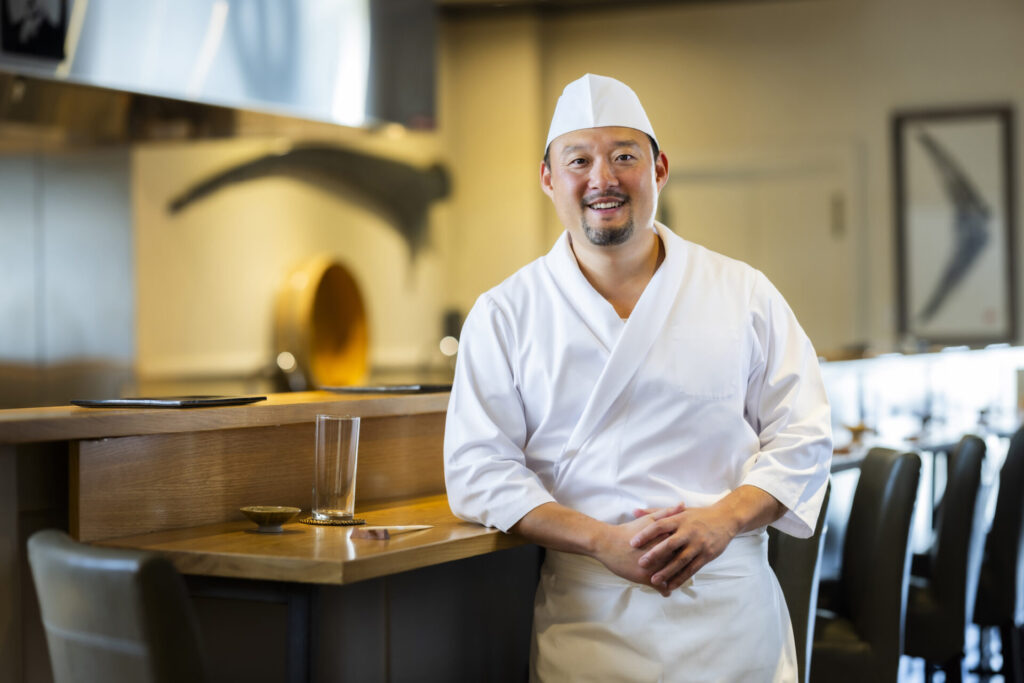
All of that was a long time ago, so long, we realize, that we have since forgotten what that place was called. The most memorable part of that experience was how hard it was to get in. In Gloucester, we have nearly the opposite experience at Sushi Sang Lee, where, when the doors open, we are ushered into an austere 10-seat sushi bar and introduced to Chef Sang Hyun Lee, a South Korean–born sushi chef who has toggled between Boston and New York, acquiring skills at famed spots like Oshii Too, in Sudbury, and Shuko, in New York.
Operating in two seatings from Thursday to Sunday nights, Sushi Sang Lee serves only 18-course ($180 per person) edomae omakase menus. Cordoned off from the rest of the retail space, it is a quiet, contemplative space, where even a solo diner can find easy conversation and fast friendship.
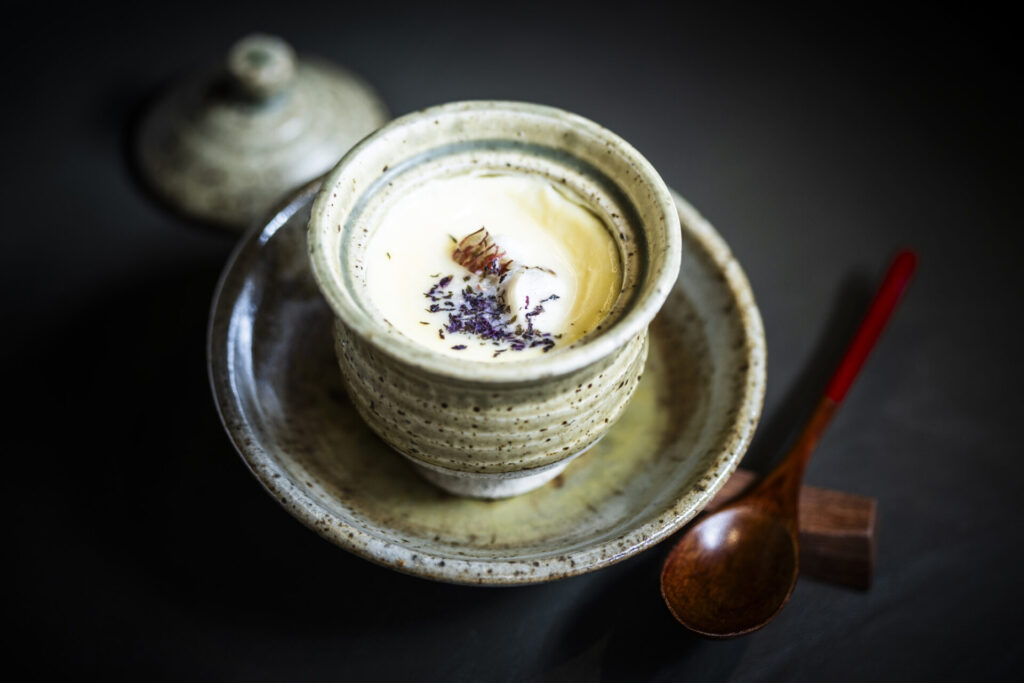
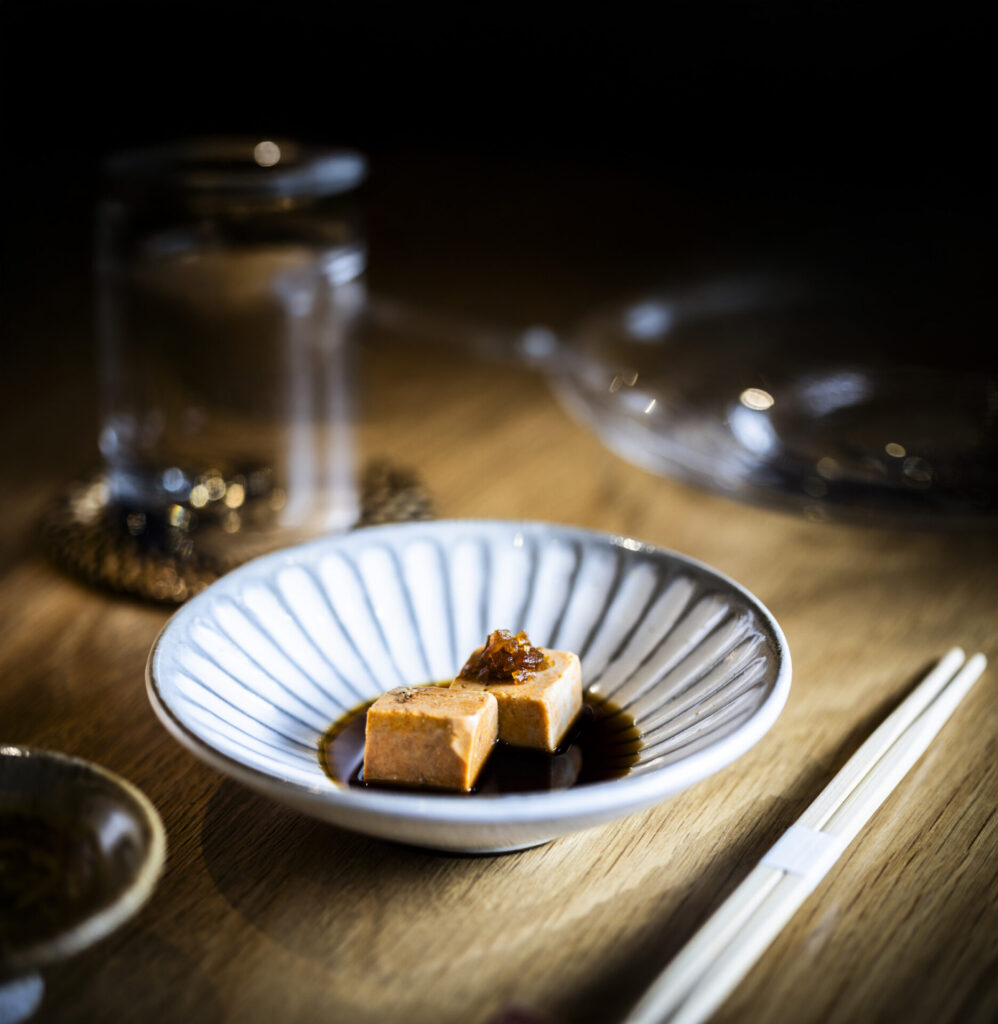
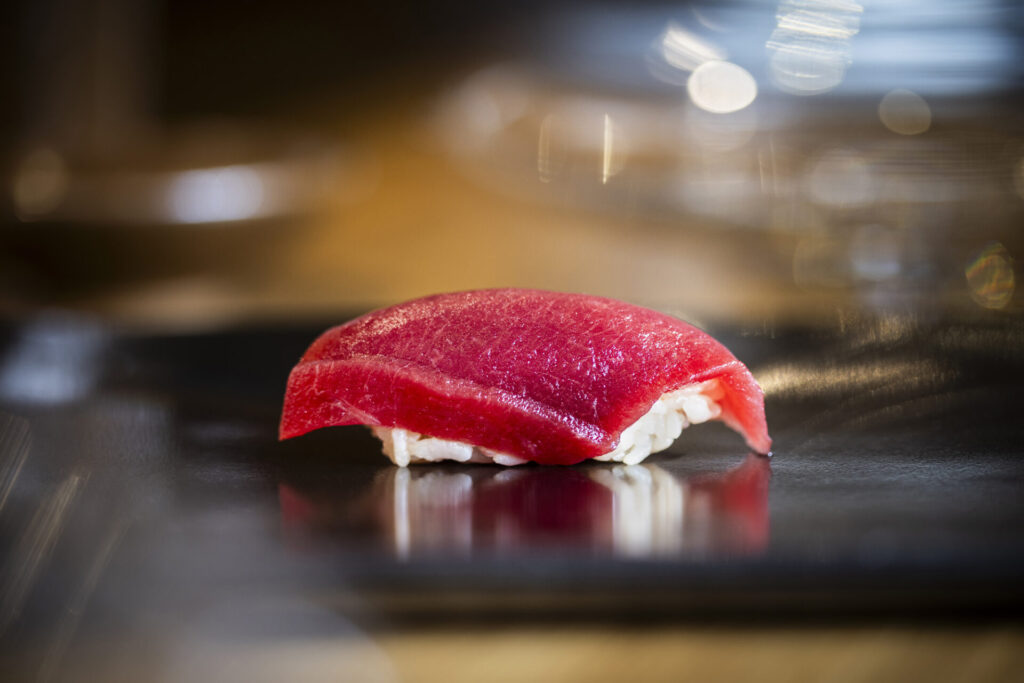
Our meal begins with otsumami, or appetizer courses. First, a chawan mushi, a soft and expertly rendered traditional savory egg custard, wobbling beneath local northern stone crab. The chef describes it as a Gloucester lobsterman’s bycatch that is rarely used. It is candy sweet. Live sea scallops—hotate—plucked right offshore practically vibrate beneath our chopsticks, served with no more than that wasabi, roasted Japanese sea salt, a grate of lemon, and lemon juice.
Then begins a parade of dishes: cured shime saba isobe maki, or cured Gloucester mackerel in a roll with pickled ginger, chives, shiso, and sesame; a delicate ankimo, Gloucester monkfish liver—the so-called foie gras of the sea—beneath a sliver of pickled squash, or narazuke, in a pool of ponzu; and smoked and seared katsuo, skipjack, with Japanese rice straw, fresh ginger, chives, zuke sauce, and roasted sea salt. That, of course, is just the beginning.
The nigiri comes next. We eat madai, sea bream from Japan. Akami zuke, marinated ruby-red lean bluefin tuna from our own waters. Akaroa salmon from New Zealand with lime zest. We eat ikura, or marinated Alaskan chum salmon roe, and botan ebi, spot prawn from Canada with yuzu juice, lemon zest, and roasted sea salt. The kinmedai—Japanese goldeneye snapper served with Japanese mustard—clears my sinuses. More nigiri: Hokkaido uni, Hagashi toro, anago, or Japanese conger eel, with house-made eel sauce and sansho pepper.
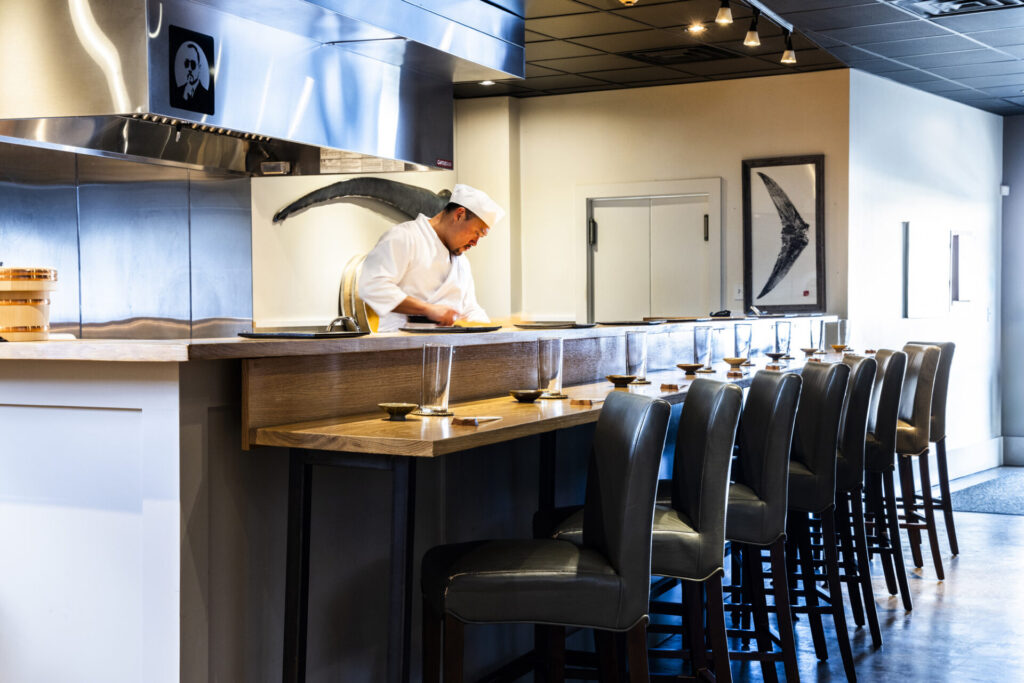
When we are reaching max capacity, we are served red bowls, 100-year-old Japanese vessels, which hold Gloucester’s own cherrystone clams in a translucent broth, a sake clam soup. We remove the perfect bivalve first with chopsticks, then hold the bowl to lips and sip.
The restaurant serves no alcohol. Instead, my mother and I drink sodas—yuzu for her, yuzu and apple for me—although other guests drink green tea, or kombucha from Copenhagen, or sparkling water, pairings meant to emphasize the fish and only the fish. This is, after all, a study in the basics. Before our nigiri arrives, we are given a quick reminder from the chef: “One bite,” he primes us. Those well-versed in omakase may already know that it is best practice to place the bite of fish into the mouth in a single piece, that the mastery will suffer otherwise. The reminder serves to level the playing field for the familiar and the uninitiated.
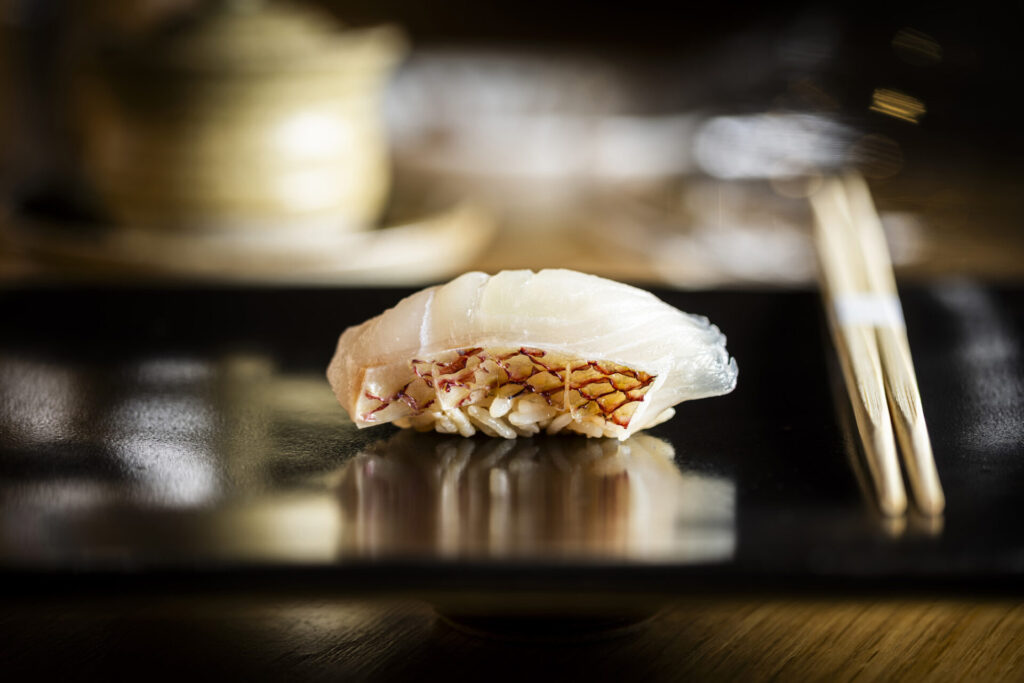
Dashi maki tamago, a type of sliced and cooked omelet that often showcases Japanese mastery in cooking, is one of two dessert courses offered at Sushi Sang Lee. The second, final course, is a yuzu-mango sorbet, topped with ube syrup and a flurry of shiso. Like every single bite I sample at Sushi Sang Lee, even the final one favors delicacy over bombast.
As dinner ends, guests to my right, hailing from Andover, marvel; they have already been to the restaurant, which has been open since 2021, at least eight times (or maybe more; they have lost count). In some future world, I imagine I’ll be a regular, too. I can’t picture forgetting the name, or the dishes I’ve eaten. Unlike some long-forgotten speakeasy, Sushi Sang Lee is not a passing trend.

